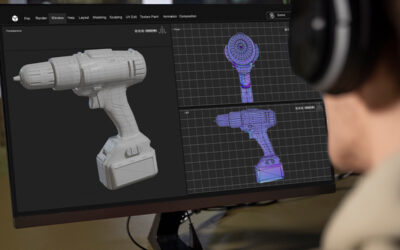
When it comes to historical document scanning, it makes it easy for colleges, libraries, museums and archives to share their precious texts with those who wish to view them. It becomes easy to make these items available to a broader audience, and share the knowledge. In fact, the priceless tomes, periodicals and papers can now be preserved without fear of damage. For example, recently a great initiative was undertaken by researchers at Stanford’s Center for Spatial and Textual Analysis (CESTA) to preserve Rome’s historical images. A team of Stanford researchers created a new digital archive to study Rome’s transformation over the centuries. The archive is the end result of a two-year collaboration among CESTA, the Stanford University Libraries, the University of Oregon, Dartmouth College and the Italian government.
The archive has a collection of almost 4000 digitized drawings, prints, photographs and sketches of historic Rome from the 16th to 20th centuries. The materials were collected by the renowned Roman archaeologist Rodolfo Lanciani, who wanted to document the entire history of Rome’s archaeology up to the end of the 19th century. After his death, his library was sold to Italy’s National Institute of Archaeology and Art History in Rome that contains more than 21,000 items.
Before the digital age, viewing Lanciani’s collection required a visit to the historic 15th-century Palazzo Venezia in central Rome. It is on the fourth floor and in its own dedicated room, which is open for only a few hours during weekdays. Only one folder from the collection can be viewed at a time. This makes it difficult for archeologists, historians, architects and other researchers who need to study ancient cities from the collection to gather valuable information about Rome’s history and structure. “These materials are very important and have been used by many different scholars, but access to them is quite limited,” said Roman archeologist Giovanni Svevo, who also worked on the digital archive.

For proper storing and searching online, each digital object after scanning and imaging was categorized and tied to a descriptive set of data. Now, these digital images and their associated descriptions are permanently stored and preserved in the Stanford Digital Repository. The main idea behind the creation of the digital collection is that it would help researchers and other interested people understand the history of Rome, which is considered to be one of the most documented cities in the world.
The significant aspects of this project are:
- It provides accessibility to a precious archival collection
- Ensures their future preservation and can recreate the past
- Digitized materials can be made easily available to scholars, students and the general public
- Will help prevent damage and degradation to these priceless documents.
This digitization of Rodolfo Lanciani’s collection was part of larger effort to recreate the spatial history of Rome, a project named “Mapping Rome,” that Steiner and Tice began around 2004. As part of that effort, the team is still digitizing Lanciani’s famous Forma Urbis Romae, a cartographic map that traces Rome’s ancient ruins and its later developments and also digitized the work of two other 18th century Italian architects.
Such projects not only help in improving access to valuable historical material, but also ensure future preservation of those priceless documents. So, more libraries and institutions should start digitizing their historic documents so that it helps preserve the wealth of knowledge for future generations. To bring such collections online or for any other digitization project it requires a high degree of expertise, collaboration and efficiency. In such situations the best option is to rely on experienced document scanning companies to achieve specific digitization goals. Document scanning services are provided by professional teams using high-end scanners to produce high resolution images.



